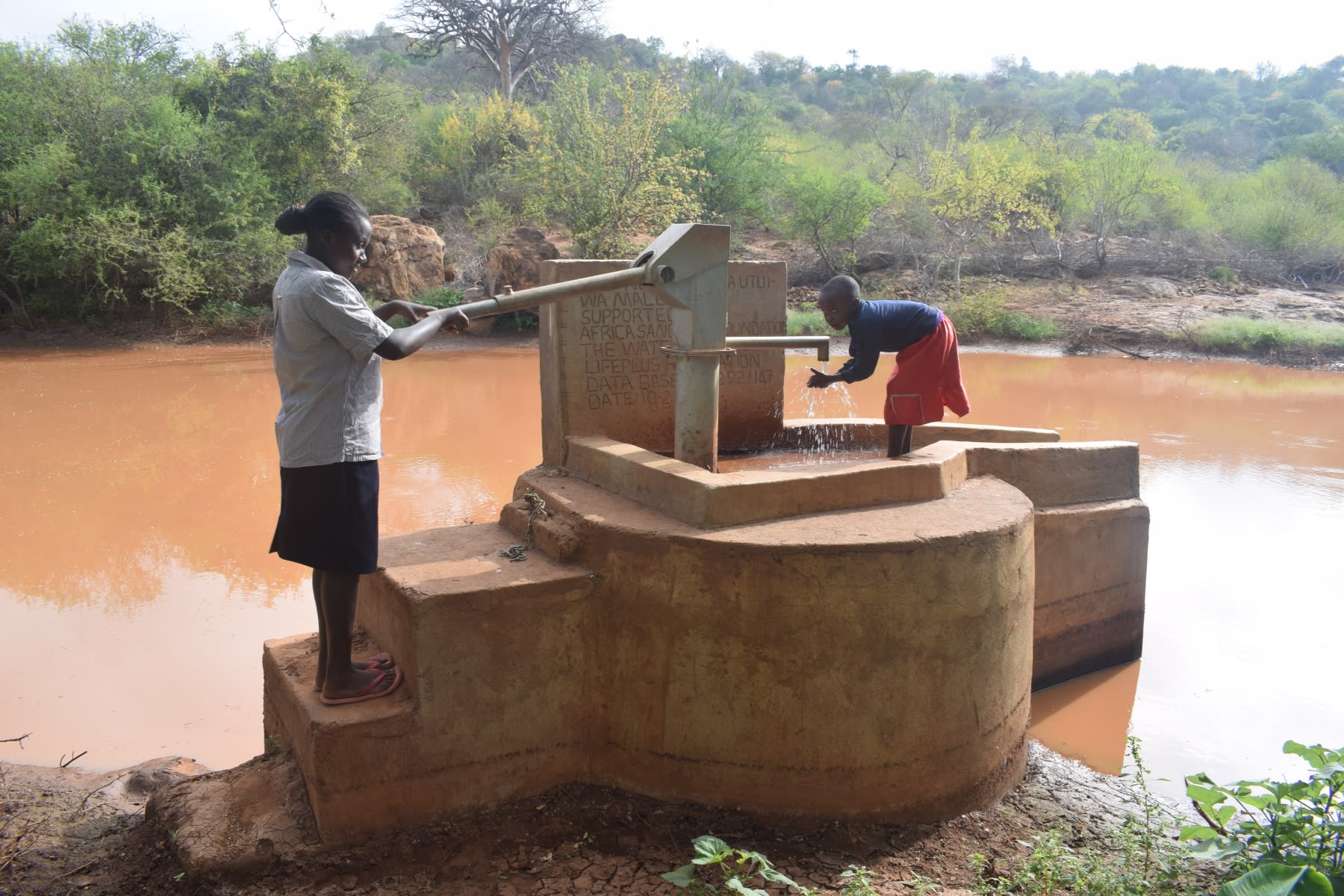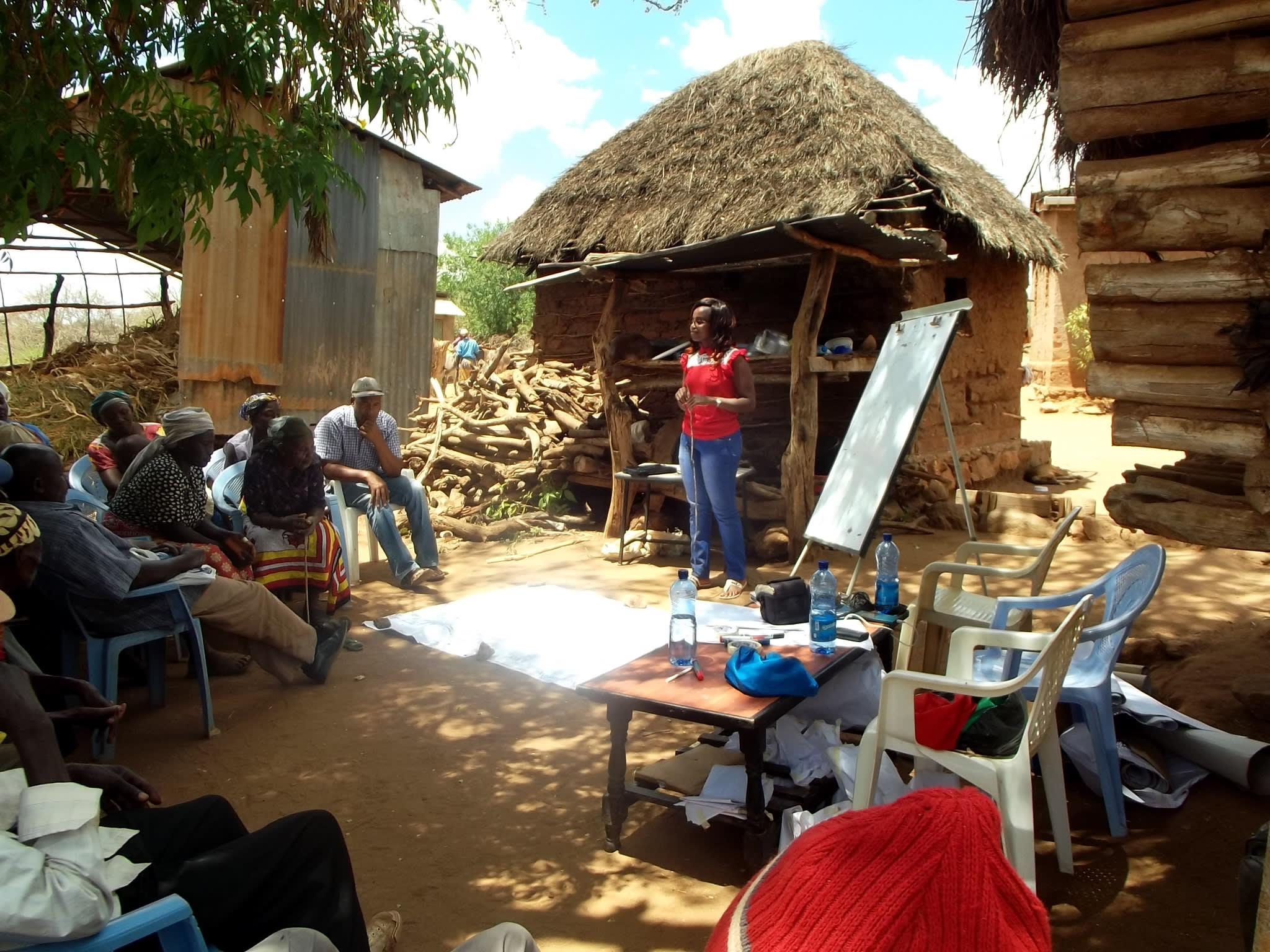Welcome to the Community
Ngwatanio ya Utui wa Maluvyu Self-Help Group was formed in the year 2015. The average size of each member's household is six, while the average age of the members is 54. The group is located in Maluvyu Village, which has a population of 255 people from 52 households.
50% of the group members said that they rely on agriculture as their main source of income while 45% of the group members get it from manual labor. 5% of the group members said that they rely on remittances from their relatives as their main source of income.
Water Situation
Some families living in Maluvyu have connected rainwater catchment tanks to their gutter systems. But even they have to travel to the river to fetch water. Since it's so dry in southeastern Kenya, holes must be dug in the riverbed to get to any water. Women dunk their plastic containers in this visibly contaminated water to fill them.
40% of Ngwatanio ya Maluvyu members travel a distance of less than one kilometer, which is within a range of acceptable access. But the rest of the group members still must travel more than one km to get to the water source every single day (30% of the members travel a distance of 1-2km to fetch their drinking water while 25% travel a distance of 2-3km to fetch their drinking water. The other 5% travel a distance of 3-4km to fetch their drinking water). When water is delivered home, it is emptied into larger storage containers ranging from 200 liters to 1500 liters.
Sanitation Situation
The people in Maluvyu have already had opportunities for hygiene and sanitation training provided by the government, so they are ahead of most other communities.
Almost all of the households here have their own pit latrine. In contrast, only a few of them have hand-washing stations or helpful tools like dish racks and clotheslines (you can see examples of what we found under the pictures tab).
Plans: Hygiene and Sanitation Training
The group will meet for two days for an extensive review on what they’ve learned about hygiene and sanitation. There are also holes in their knowledge, apparent by the lack of hand-washing facilities. During training sessions, group members will learn a locally sustainable way to construct their own 'handsfree' hand-washing station. We will also focus on safe water handling, storage, and safe food preparation.
Plans: Sand Dam
We worked with the community to determine the best location along the riverbed for their sand dam. As it matures, it will build up sand and naturally filter the river's water and the rainwater supplied during the rainy season.
It will raise the water table and transform the land, making it fertile for farming. With the ongoing installation of a hand-dug well (click here to view that project), water from this sand dam will be safely used for drinking.
It is projected to be 54.4 meters long and 4.55 meters high.



 Rehabilitation Project
Rehabilitation Project





























